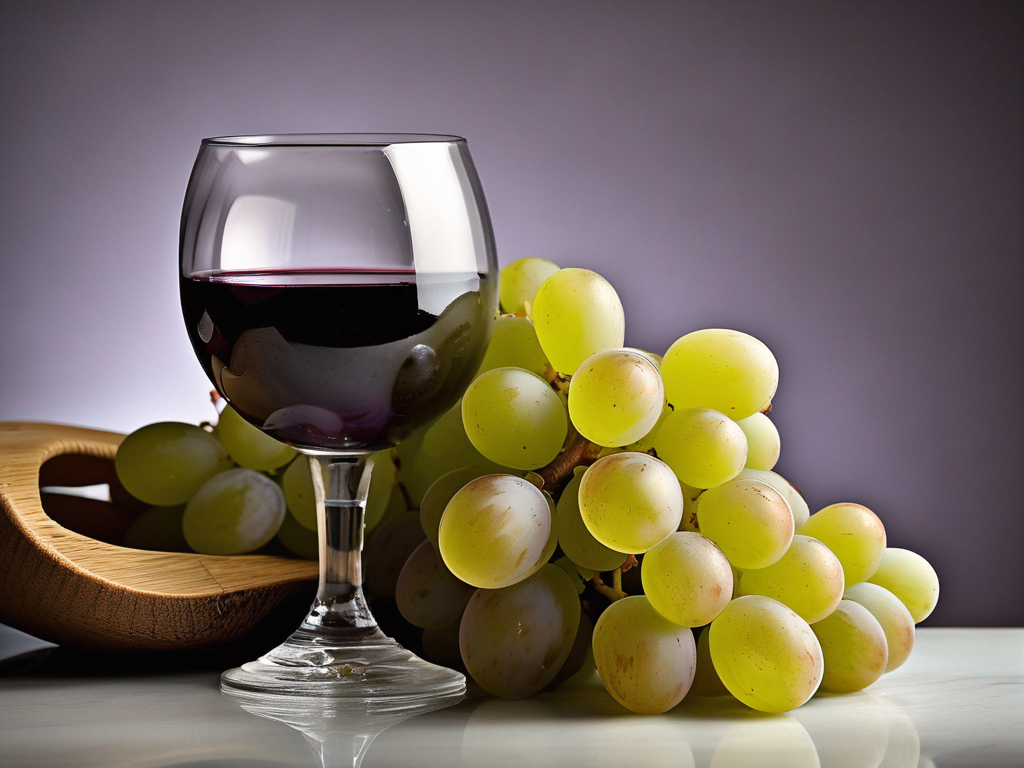
The Ultimate Guide to Knowing When to Toss Common Grapes
Get Your Free Food Safety Cheat Sheet
30 most common foods with instant answers. Print it and stick it on your fridge—completely free!
The Ultimate Guide to Knowing When to Toss Common Grapes
Grapes are a popular and versatile fruit enjoyed by many, whether eaten fresh, dried, or used in cooking and winemaking. However, like any perishable food item, grapes have a limited shelf life and can spoil if not stored properly. In this guide, we will discuss how to determine when it's time to toss common grapes to ensure food safety and quality. (Common grape)
Understanding Grape Shelf Life
Grapes are highly perishable fruits that can spoil quickly if not stored correctly. The shelf life of grapes can vary depending on factors such as variety, ripeness, and storage conditions. Here are some general guidelines to keep in mind:
Factors Affecting Grape Shelf Life
- Variety: Different grape varieties have varying shelf lives. Red and black grapes tend to have a shorter shelf life compared to green grapes.
- Ripeness: Ripe grapes are more prone to spoilage than underripe grapes.
- Storage Conditions: Proper storage is crucial to extending the shelf life of grapes. Factors such as temperature, humidity, and air circulation can impact their freshness.
Signs of Spoiled Grapes
It's essential to know how to identify signs of spoilage in grapes to prevent consuming unsafe food. Here are some common indicators that grapes have gone bad:
Visual Signs
- Mold or mildew growth on the grapes
- Discoloration or browning of the grapes
- Wrinkled or shriveled skin
- Leaking juice or liquid from the grapes
Texture and Smell
- Soft or mushy grapes
- Foul or fermented odor emanating from the grapes
Proper Storage Tips for Grapes
To maximize the shelf life of grapes and maintain their quality, it's crucial to store them correctly. Follow these storage tips to keep your grapes fresh for longer:
- Refrigeration: Store grapes in the refrigerator in a perforated plastic bag to maintain humidity levels.
- Avoid Moisture: Do not wash grapes until you are ready to consume them to prevent mold growth.
- Remove Spoiled Grapes: Check your grape bunches regularly and discard any spoiled or moldy grapes to prevent contamination.
Food Safety Tips for Handling Grapes
Ensuring food safety when handling grapes is crucial to prevent foodborne illnesses. Follow these food safety tips when working with grapes:
Washing Grapes
- Rinse grapes under cold, running water before eating or using them in recipes.
- Gently rub the grapes to remove any dirt or residues.
- Pat the grapes dry with a clean paper towel before storage or consumption.
Avoid Cross-Contamination
- Use separate cutting boards and utensils for grapes to prevent cross-contamination with other foods.
- Store grapes away from raw meats and poultry in the refrigerator to avoid potential contamination.
Conclusion
In conclusion, knowing when to toss common grapes is essential for maintaining food safety and quality. By understanding the signs of spoilage, following proper storage guidelines, and implementing food safety practices, you can enjoy fresh and delicious grapes while minimizing the risk of foodborne illnesses. Remember to regularly inspect your grapes, store them correctly, and practice good hygiene to ensure a safe and enjoyable culinary experience.
For more information on common grapes, visit our [common grape](/food/common grape) page. Stay safe and enjoy your grapes responsibly! (Common grape)
Related Posts
Here are some other articles you might find helpful:
Authoritative Food Safety References
These agencies and university labs inform every tip and health precaution we publish.
USDA FoodKeeper – Cold Storage Guidelines
Official refrigerator, freezer, and pantry timelines maintained by the U.S. Department of Agriculture.
Visit USDA FoodKeeperFDA Produce Safety Rule & Grower Guidance
Field-to-fridge handling practices that prevent contamination of fruits, vegetables, and leafy greens.
Visit FDA Produce SafetyCDC Foodborne Illness Prevention Hub
Surveillance-backed guidance on pathogens, symptoms, and steps to reduce foodborne illness risk.
Visit CDC Food SafetyUC Davis Postharvest Technology Center
University research detailing optimal storage atmospheres for produce after harvest.
Visit UC Davis PostharvestPenn State Extension – Home Food Preservation & Safety
Peer-reviewed extension bulletins on safe canning, chilling, and reheating practices.
Visit Penn State ExtensionGet Your Free Food Safety Cheat Sheet
30 most common foods with instant answers. Print it and stick it on your fridge—completely free! Want more? Upgrade to the complete guide with 70+ foods.
Scan your food directly and get instant safety info using our AI-powered camera feature.